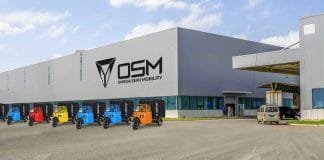San Francisco / Global: Meta has officially opened its Meta AI Store, offering hands-on experiences with its latest AR/VR and AI-powered products. While the store impresses with sleek layouts and futuristic tech displays, early demonstrations have produced mixed reactions, particularly the Ray-Ban augmented reality glasses demo.
Ray-Ban demo falls short
The 30-minute Ray-Ban demo aimed to showcase AR overlays, navigation features, and AI-assisted applications, but visitors reported it felt limited in scope, with occasional latency issues and underwhelming content. While the hardware appears polished, users expressed that the demo did not fully convey the potential of AR wearables.
Neural interface steals the show
In contrast, the neural interface demo offered an intuitive glimpse into brain-controlled AR/VR interactions, enabling participants to manipulate digital objects and navigate environments with simple neural inputs. Experts suggest this technology could redefine user engagement in immersive experiences and represents a key step toward practical AI-integrated interfaces.
Store design emphasizes accessibility and engagement
The Meta AI Store features hands-on experience zones, sleek product displays, and interactive tutorials. Visitors can explore mixed reality, AI-assisted productivity tools, and smart wearable devices, all curated to highlight Meta’s vision for the future of personal and enterprise technology.
Industry takeaways
While the Ray-Ban demo revealed current limitations of consumer AR, the neural interface hints at next-generation applications in gaming, design, and remote collaboration. Analysts note that Meta is positioning itself at the intersection of hardware, AI, and immersive tech, signaling long-term ambitions despite incremental early consumer experiences.
Looking ahead
Meta plans to expand AI store locations and continue demo refinement, particularly for wearable AR devices. Observers say the store is as much a showcase of vision as of technology, suggesting that future iterations could bridge the gap between concept and everyday usability.
















